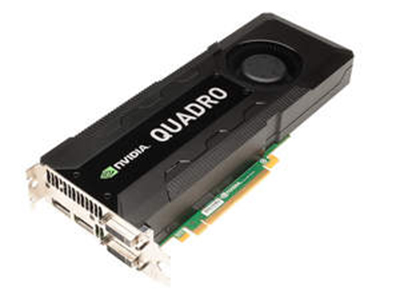NVIDIA Quadro K5000 Launches For Apple Mac Pro Users
NVIDIA has released their fastest Quadro card to date for Apple’s Macintosh systems, the Quadro K5000. Sporting a list of features and enhancements the card delivers unprecedented visualization and computation capabilities for designers and digital content creators. Key features of the Quadro K5000 GPU for Mac include Cinema 4k display support (4096×2160), new display engine that is capable of driving up to four displays and 4GB of graphics memory to name a few. In general the NVIDIA Quadro K5000 is an ideal solution for professional applications like video editing, compositing, ray-traced 3D rendering and more. That said, its not just usable with Macs either, the Quadro K5000 retains it’s full performance and features when using Apple Boot Camp and running Windows-based versions of the same applications.

The Quadro K5000 is of course based on NVIDIA’s Kepler architecture and depending upon the workload is 2x faster than the Fermi-based Quadro 4000 that it replaces. Display connectivity consists of two DisplayPort 1.2 and two DVI-DL ports. As for specs the Quadro K5000 has 1536 CUDA Cores, 4GB GDDR5 memory on a 256-bit bus and has a single precision compute performance of 2.1 Teraflops. The NVIDIA Quadro K5000 will be available later this year at an estimated price of $2,249.
NVIDIA Quadro K5000 For Mac Features:
- Cinema 4K display support (4096×2160 resolution), which enables content creators to process and view high resolution cinema content
- A new display engine that can drive up to four displays simultaneousl
- 4 GB graphics memory that provides faster interactivity when using design and content creation applications
- Based on NVIDIA Kepler architecture, which enables the Quadro K5000 GPU for Mac to run key content creation
- Applications up to 2x faster at lower power than the Fermi-based Quadro 4000 for Mac
- Support for up to two Quadro K5000 GPUs for Mac in a single Mac Pro
- Support for OpenGL, OpenCL and NVIDIA CUDA

Comments are closed.